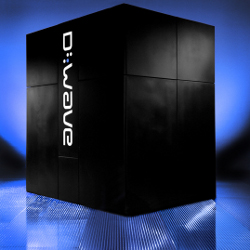
A Canadian company developing a quantum computer made news in May when it sold a system to defense manufacturer Lockheed-Martin for $10 million, though skeptics question whether the machine made by D-Wave Systems, of Burnaby, British Columbia, could surpass conventional computers. Critics had been somewhat mollified after the company published a paper in the journal Nature showing that their processors were indeed relying on quantum mechanical effects. Nonetheless, experts are not yet convinced D-Wave has created a true quantum computer.
"This is a very interesting experiment," says Scott Aaronson, assistant professor of electrical engineering and computer science at the Massachusetts Institute of Technology. "It doesn't demonstrate yet all the requirements for scalable quantum computing."
The main criterion for such a demonstration, he says, would be showing that the computer could solve a problem on a time scale that a classical computer can't achieve, no matter its processing power. A quantum computer could do this because the quantum bits—qubits—exhibit superposition; they are in all possible states, so each qubit can run many calculations simultaneously. Failing that, Aaronson would at least like to see evidence that the qubits are entangled, sharing a quantum mechanical property even while separated. Many researchers have entangled two or three qubits, though that is not enough to do significant computation.
But Mark Johnson, a scientist in D-Wave's processor development group and lead author of the Nature paper, says while entanglement is a requirement to run Shor's algorithm for factoring large numbers, it may not be necessary in quantum annealing, the function his processor performs. The system uses eight loops of supercooled, superconducting wire producing magnetic fields that want to align with one another but are forced not to. Using current to change the energy barriers between the fields, it finds the lowest energy state of the system. Many algorithms can be mapped onto such a system; Lockheed hopes to use it to optimize the interaction between the company's sensing hardware and software.
Though Shor's algorithm is a major benefit usually touted for quantum computing, Johnson says the variety of algorithms that can be run with quantum annealing may ultimately prove more useful. And while D-Wave's current machine does not beat the speed of conventional computers, he believes it won't be long until the company can integrate more qubits and outperform classical machines. Johnson says the work on today's machine, despite its limits, moves the field forward. "If we want to have the ultimate quantum computer, we have to solve all the problems we're solving now, in addition to another set of problems," he says.
Aaronson still sees a gap between what the company's marketing promises and what their scientific papers demonstrate, but he is willing to be convinced by evidence. "The challenge for D-Wave is to bridge that gap," he says. "And we hope they succeed."
FURTHER READING
D-Wave home page: http://www.dwavesys.com
Scott Aaronson home page: http://www.scottaaronson.com/
Nature abstract: http://www.nature.com/nature/journal/v473/n7346/full/nature10012.html
Scott Aaronson blog about D-Wave: http://www.scottaaronson.com/blog/?p=639
MIT's CSAIL: http://www.csail.mit.edu/index.php
Lockheed: http://www.lockheedmartin.com/
Neil Savage is a science and technology writer based in Lowell, MA.



Join the Discussion (0)
Become a Member or Sign In to Post a Comment